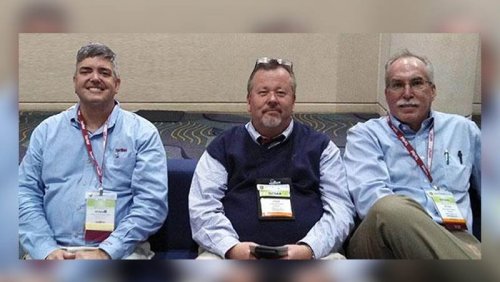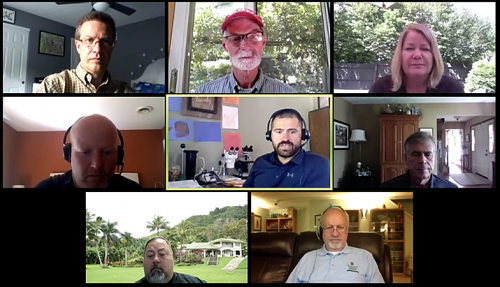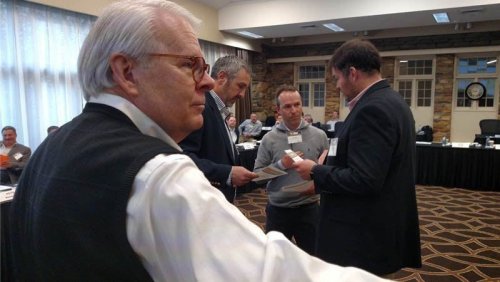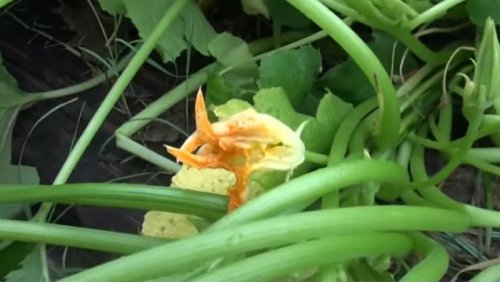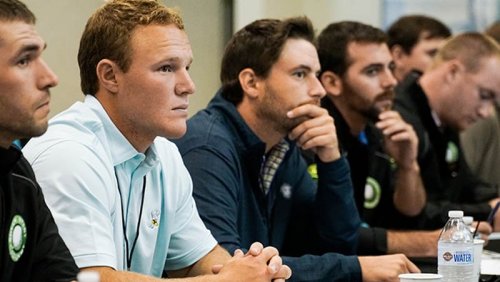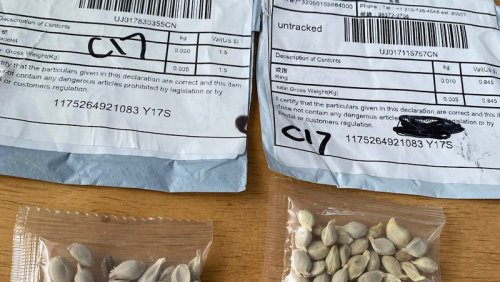
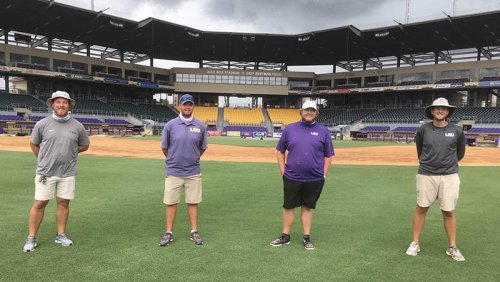
Unlike its West Coast cousin that caters to Hollywood celebrities, Nicholson Drive's attraction is not high-falutin retail outlets like Cartier, Prada and Versace.
Make no mistake, Tiger Stadium, the 102,000-seat home to Louisiana State University's defending national champion football team, is the undisputed Tiffany & Co. of Nicholson Drive.
Although the fate of this year's college football season is tenuous at best, it has been business as usual for LSU sports turf manager Jon Pfeifer and his crew since the pandemic shut down sports in Baton Rouge and everywhere else in mid-March.
"The grass doesn't stop growing," Pfeifer said.
LSU's football field was under renovation when the pandemic arrived, so there has been plenty of work there. And the baseball team was still playing across the street at Alex Box Stadium and the softball season was under way at Tiger Park.
Alex Box Stadium is a hub activity throughout the year. Besides college games, it is a hotspot for youth tournaments and special events, workouts by aspiring pros and campus visits by high-profile recruits at one of the country's premier college baseball programs.
This year has been a lot of things, but typical is not one of them.
"Typically, Alex Box Stadium is busy 11 months a year," Pfeifer said. "Between recruiting, showcases, camps, campouts and tournaments, they want the field to look top notch as much as possible."
LSU's last game of the baseball season was a 4-1 win over South Alabama on March 11. The remainder of the season was canceled within a few days, and with it the outside events scheduled for Alex Box and the rest of LSU's athletic facilities.
When the virus ended the baseball season right before a road trip to hated rival Mississippi, there were more questions than answers surrounding sports, and Pfeifer and his team continued to manage the baseball and softball fields to game-ready conditions amid rumors those seasons might restart.
Pfeifer grows Celebration Bermudagrass at all of LSU's outdoor athletic facilities as well as at University Laboratory School, a nearby high school operated by LSU. It is a hearty turf that requires a lot of attention.
"It's an aggressive grower," Pfeifer said. "We call it the thatch-master.
"We kept everything at five-eighths (inch) and didn't vary from that. We had an unseasonably cool spring. Usually, by the first week of April, we're struggling to keep the ryegrass. This year, it's still here," he said in July.
"When you want to keep the rye, you can't. We didn't spray any of the ryegrass out, because we didn't know when they might be coming back or if they were coming back."
It turns out that returning to play has taken much longer than anyone imagined back in March. Baseball and softball are scheduled to return to play in January, but whether that occurs is anyone's guess right now. And those special events? They're not happening either.
It has been similarly quiet across Nicholson Drive at Tiger Stadium. Well, quiet for everyone except Pfeifer and the rest of his team.
SEASON ON THE BRINK: Will there be a return to play this year for college football, or is a long-distance look at LSU mascot Mike the Tiger (No. 7), the closest we'll get? The Celebration Bermudagrass field at Tiger Stadium was removed after last year's regular season finale, a 50-7 drubbing of Texas A&M. Installation of a new Celebration surface was completed in June, giving Pfeifer and his crew two months to grow-in a new field in anticipation of LSU's intrasquad scrimmage, scheduled for Friday.
Staying busy and staying out of each other's way have been easy for Pfeifer's crew that includes Ben Wilson, Alex Redd and Stephen Guillaumin. Employees are screened daily for symptoms of the virus and when cleared are given a color-coded wristband.
Initially, the crew came in on staggered shifts, with each team working just a couple days per week.
"We did that for two weeks, then they told us it was going to be more long-term, so let's get some work done," Pfeifer said. "We worked a modified schedule. On Mondays, one of us would come in and start aerifying. On Tuesday, two guys would come in and mow and two more would hop on a tractor and a Pro Gator and pick up cores. We'd finish mowing on Friday. There were never more than two guys working together, and they were never really together. We did that for a month. Since May, we've done a staggered start with one group coming in at 5 (a.m.), one coming in at 6, one coming in at 7 and another at 8," Pfeifer said. "In between, disinfecting goes on, there is mandatory screening and everyone gets what I jokingly call the 'fast pass.'
"We came up with a good plan to get our work done and still operate under social distancing guidelines. We were really fortunate. The university wanted to make sure we were being smart, but still getting our work done. They left it up to use to build our own schedule."
Amid a host of uncertainty, the crew has breathed a collective sigh of relief since being trusted to make its own work schedule during the pandemic.
"The unknown has been nerve-racking," Wilson said. "We are so schedule-oriented, and not knowing what was coming, or when we'd have anything again was stressful. At the same time, we tried to take advantage of that time to do things we normally wouldn't have time to do."
Although the football team gets a new field, the baseball team will be the beneficiary of some much needed agronomic work when practice begins in January.
The stadium opened in 2009, but the amount of activity that occurs each year does not give the grounds team much time to perform cultural practices needed. The result is a surface that doesn't train, or play, like it should.
The extra time to work on the field has been one of few positives coming out of the pandemic.
"Normally, we have three weeks out of the year when we can conduct any agronomic practices that we want to on that field," Pfeifer said. "Most years, we get to aerify one time. This year, we've hit it three times already. It is unheard of the year we've had.
"There's years of build-up. It's not from neglect; we only get one chance per year to take out 10 percent of that field. The biggest advantage this year that players will notice is that soil amendment. We've aerated three times. We've estimated that each time that is 4 million holes. We're swapping out the old material for the new."
The softball team will also notice a difference when they take the field early in 2021.
"It's a slow process," Wilson said. "The softball field is new. We redid it two years ago with new drainage, but you can already notice some buildup and thatchiness. This year we've been able to get on there and be pretty aggressive with it. You have to stay on top of it. Celebration is an aggressive grower and it will sneak up on you pretty quickly if you don't stay on it."
Soon enough, the crew here will be back to painting lines at Tiger Stadium as well as at University High. While it is unknown when they actually get to press the restart button, the downtime has not been for naught.
"It has given us time," Redd said. "Time to erase the pallet and start over."
- Read more...
- 2,552 views


